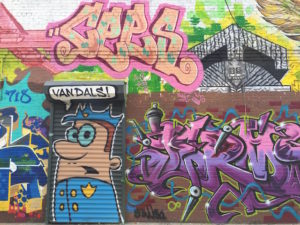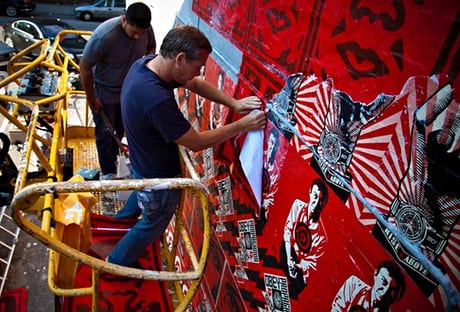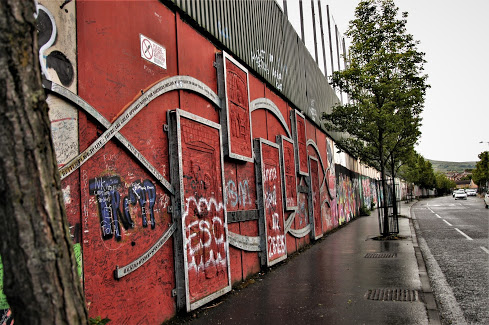
For decades now, art has spread itself across many forms, platforms, and even on buildings. Graffiti originated in New York, in the 1970s. The artists started to create their designs on any wall they could find, buildings, or generally on any flat surface accessible to the public. The styles range, changing across each city it spread to. The goal of these creators was to have their work publicized as much as possible, or even to tell a story. Quite frankly, they were successful. Filling the streets of nearly every neighborhood, It had overtaken many other aspects of beauty the city offers. Citizens often admired the simplicity and aged look of buildings, and the overall historical feel of the town. Controversy arises regarding the outlandish displays of artwork when it distracts from the setting overall. At least that is what is often told.
On one hand, nobody wants to see a picture of a guy’s rotten teeth and naked women on the side of the building where one may buy groceries. The lack of acknowledgment of the context regarding the artwork and where its placed generally continues to give graffiti its bad reputation. Most of the time, without proper placement, the art itself loses meaning and value. Very few individuals based in wealthy neighborhoods take the time to discover the hidden meaning of an art piece simply because they can’t control it. Ironically, the graffiti, and culture that follows it, often demands open-mindedness from all backgrounds and social class. It has no regard for the state of mind one may be in, or if the inhabitants of the area would like to see it or not. Raising awareness or advertising in the form of street art is the brilliance behind capitalism. People often don’t like that they don’t always have a say in what they consume, or what may be newly added to the city they call home. People may not agree with the message that is now fully spray-painted on the wall, hence, it is often removed. Individuals often say ignorance is bliss, and instead of looking at the art for what it really is, we criminalize forceful awareness. It’s easier to remove something that is not understood than to face the uncertainty and leave with new knowledge, and a new perspective. That to me is the true crime. Who are we really punishing here, the artists or ourselves?








I think that often times, graffiti is seen by people as vandalism when it is placed in the wrong location or the contents do not fit the location as stated in this reading. Graffiti however is a form of art and can bring life to a neighborhood, even becoming an iconic site to a neighborhood. Growing up in LA, graffiti is something that is all around and in every neighborhood you can find a piece that has been there for years, you can even find shop trucks covered in graffiti. At the end of the day, graffiti is a form of art that should live in every neighborhood as long as its contents fit the environment.
I have always admired graffiti and the beautiful creations people make in various places. I am often drawn to the bold statements and bright colors. While I do understand the negatives associated with a building or business waking up to an unwanted image or phrase and then having to spend the money to cover it up, I appreciate the beauty and individuality that is added to the city through these art pieces. I agree that graffiti artists get too much of a bad rep for their expression of themselves or what is going on in the world, often what other artists are praised for. With permission the art would be called a mural, admired by many, but a lot of the times the best and most thought provoking art is what is unwanted. Graffiti should be praised as art just as much as any other work. It makes people stop and think, a necessity in the hustle and bustle of the city.